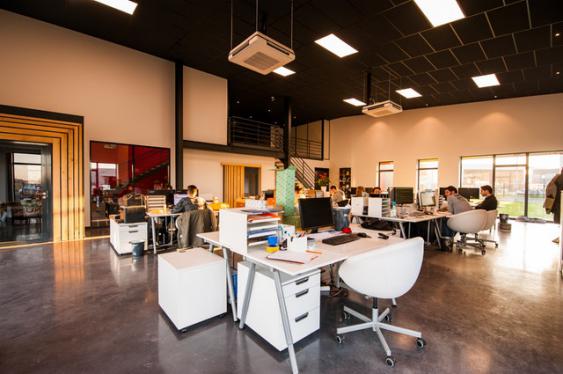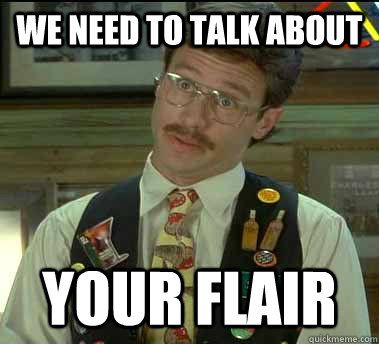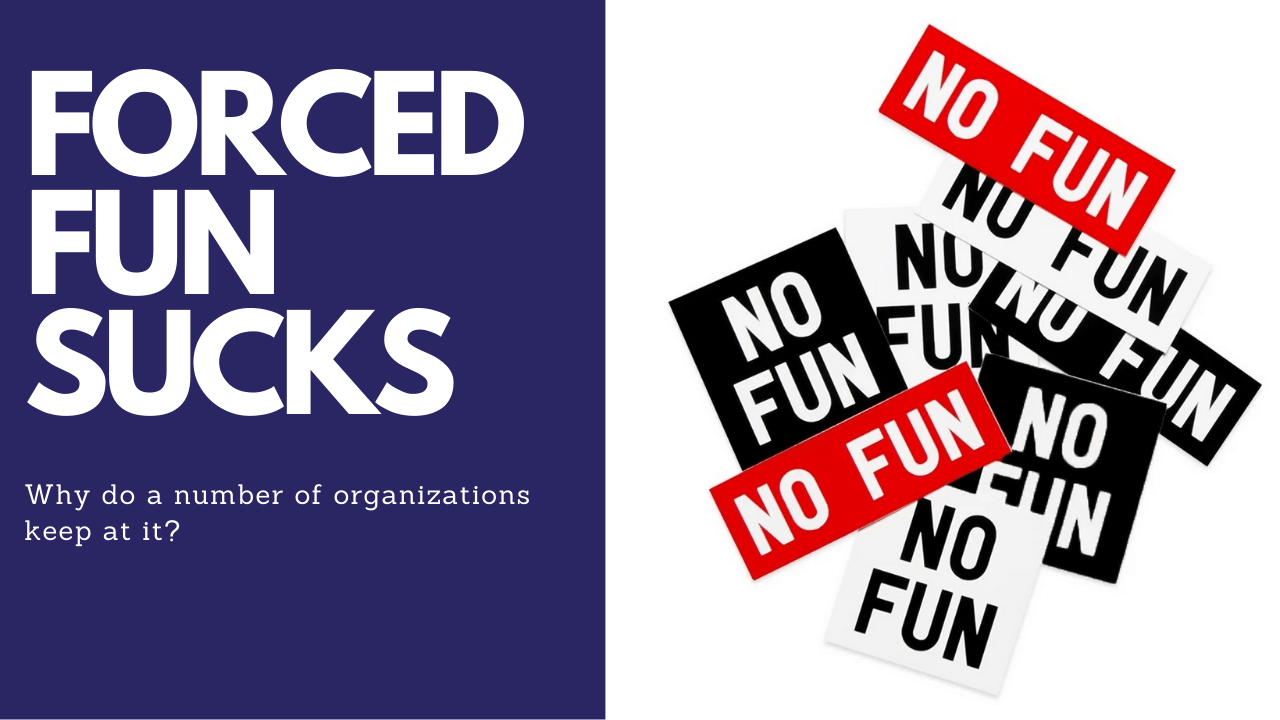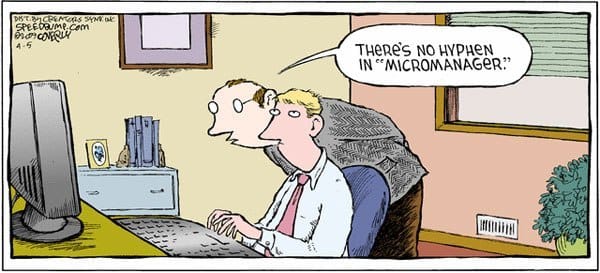Forced Fun Is No Fun – So Why Do Organizations Keep It Up?
Forced Fun In The Workplace Is No Fun.
Yes, I’m a big proponent of creating more playful workplaces. It’s one of Playficient’s key offerings. If it’s forced fun mandated by management instead of coming in a natural matter, then you end up with no fun.
Update: May 25th, 2022. I was featured in a BBC Worklife article on this topic: The death of ‘mandatory fun’ in the office.

Source – someecards
No fun to hang around
Feelin’ that same old way
No fun to hang around
Freaked out
For another day
The Stooges – No Fun (1969)
What This Post Will Look At In Regards To Forced Fun:
(Click below to jump to that section)
- Stats And Articles On Forced Fun.
- What Your Organization Can Do To Tackle This Problem.
- Conclusion And Next Steps.
I’ve done a couple of podcasts on the topic of play and avoiding “forced fun” which you can find below:
- SnackWalls E32 Paul Lopushinsky: Keeping It Playful
- People Managing People: How To Bring Creativity & Fun To Remote Teams (with Paul Lopushinsky from Playficient)
Let’s Look At A Number Of Studies And Articles On The Topic Of Forced Fun:
One of the main pieces that I want to look at is an academic study on the impact of forced fun in the workplace.

Don’t forget Friday is Hawaiian Shirt Day! Source – Office Space
I’m going to look at notable excerpts below, and provide some insights. If you want to read the entire thing (do note it’s an academic article, so it can be a bit dry), you can find it here:
Mandatory Fun: Consent, Gamification and the Impact of Games at Work
these relationships and, in a field experiment, find that games, when consented to, increase positive affect at work, but, when consent is lacking, decrease positive affect.
Playficient’s Thoughts: This, in a nutshell, is what the study found. When fun in the workplace comes about in a natural way without a management mandate, it has a positive impact. Forced fun mandated by management can have a negative impact.
Let’s continue…
Burawoy (1979) expanded the study of games at work to show how they had subtle but important benefits to management, beyond the respite that games provided workers. For managers Burawoy (1979) saw games as an important way in which management exerted control over workers, contrasting with previous research, which had viewed gameplay as a time-wasting resistance to management.
Playficient’s Thoughts: The interesting thing to make note of here is the the phrase “management exerted control over workers”. More on that later.
Let’s continue:
The notion of “mandatory” fun is fundamentally about the desire to make work more pleasant for people or to distract them from the unpleasant and taxing aspects of the work (Fleming & Sturdy, 2010), yet it also requires that managers decide what it is that will be pleasurable to the employees.
Playficient’s Thoughts: Here is where one of the major issues comes up in regards to forced fun – management tends to make the decisions of what will used for fun in the workplace.
Let’s take a look at a few more articles on the topic of forced fun.
Is It Still Considered ‘Team Building’ If They Force You To Participate?
We file into the lunchroom with stony faces. Our HR Director or some coach she brought in leads us through whatever goofy exercise they dreamed up. We waste hours on this stuff. People even call in sick to avoid the “team-building” events.
Our HR Director is gung-ho but she doesn’t listen. I have tried to tell her that our work is interesting enough to keep us “engaged” (her favorite word) and we don’t need to hold all these “team building” events, but she doesn’t want to hear it.
Gross, she isn’t listening to the team. Continuing on…
HR people are often unsure about how to build a great culture. They don’t understand that the first step in creating a terrific culture is to listen to your employees — not to force your ideas and schemes on them.
Team-building activities are only useful when everybody who participates wants to be there. There’s no such things as effective, forced team-building!
The good news is that your department is already chugging along as a team. You don’t need “fake fun” activities to help you get there.
What’s good to note is the team is enjoying itself with the challenges they are tackling together. If an organization gives employees autonomy and the ability to tackle challenging problems, it has put itself ahead of many other organizations.
Unfortunately, we end up with a case of forced fun. Where HR is pushing that it them, completely disrupting the flow of the team.
With the rise of remote work, it becomes easier than ever (thank God) to get out of forced fun.
Stop forcing your employees to have fun
As companies swarm to offer more offbeat benefits, weirder workplaces, and more on-the-clock pub outings than their competitors, we have to ask: Is it even working? If you take Gallup’s annual employee engagement survey as an indicator, the answer’s no—87 percent of global talent isn’t engaged at work, which means they’re also not productive, happy, or innovative.
When it comes to forced fun, we’ve seen so many organizations copy these big Silicon Valley giants. Something I call the FAANG Effectwhich I’ve written about here.Monkey see, monkey do.

The open office space…a case of monkey see, monkey do.
As the expression goes, the road to hell is paved with good intentions.
The cult of compulsory happiness is ruining our workplaces
A second simple step would be to stop interrupting workers with all sorts of pointless demands such as long emails, bureaucratic forms and compulsory happiness initiatives. A study by researchers at Harvard Business School found workers felt most satisfied on days at work when they were just able to consistently focus on an important piece of work and make some meaningful progress on it.
Here is an excellent paper I found on the dangers of fun in the workplace –
Plester, B. A., Cooper-Thomas, H. & Winquist, J. (2015). The fun paradox.
There’s plenty of great takeaways from the paper and worth a read. Here are some highlights…
‘not organized’ ‘created by us together’. We assigned the descriptor ‘organic’ to this category to reflect the variety of phrases that emphasised the ‘non-manufactured’ notion of fun.
There’s that word organic making an appearance.
That’s a bingo right there.
I found it very interesting that one of the participants in the research they did actually left over the constant pressure to participate.
So there you go. If you’re not convinced about the dangers of forced fun, I don’t know what else to tell you.
2. What Your Organization Can Do To Tackle This Problem.
Say it with me all together now – forced fun sucks!
If your organization is making use of forced fun, it’s time to make some changes.
In that case, what are some things that you can do about forced fun?
Take a hard look at what your organization is doing that is forced fun.
Take a look at how many things in your organization are spontaneous fun, compared to forced fun.
How many things have popped up in a natural way at your workplace that employees use to blow off steam?
From my past experiences, some things that have popped in a natural way were a Dungeons & Dragons group, Magic The Gathering, a movie club, and a book club. In my post on creating more playful workplaces, you can find some suggestions.
Management did not mandate any of the above. Some of them had a small group (less than five), while others grew larger. Leadership loved it, as long as it didn’t get in the way of productivity.
Which it didn’t. Instead, it improved it, much to the chagrin of micromanagers everywhere.

Source: Cheezburger
One of the worst things that can happen with forced fun is the perception of “optional” activities.
Say upper management sets up a fun activity that is “optional”. One example of this is the classic beer o clock on Fridays. I have friends who worked at places with this. Management expected staff to come and stay late.
They were not into these kinds of activities. Their manager brought this up in performance reviews that they weren’t a team player.
In reality, they didn’t drink and were an introvert.

How many of your employees feel about forced fun. Source: shutterstock
Co-creation with employees will help avoid forced fun.
Instead of management deciding what activities to do for fun, get employees involved. Make it a collaboration of what kind of things they’ll like to do for fun in the workplace.
I’m sure many will discover that they need to look beyond ping-pong tables and beer o clock as a result.
Using design thinking is a way to identify what employees are looking with their employee experience (which we’ve written about in the past here.)
Another way to identify these kind of activities employees would like to see would be through employee journey mapping.
Remember that we’re all going to be different.
Some people are not going to want anything. They’re going to want to do their work, tackle some interesting problems, and go home. Nothing wrong with that.
Others may want the classic tech perks and activities, like dogs in the office or ping pong tournaments.
You need to find what kind of things people would like to see, instead of mandating it from above.
Else, you end up with Hawaiian shirt week or work flares.

Source: Pinterest
Please don’t carbon copy what other organizations are doing.
Forced fun has increased due to other organizations copying what others are doing.
This is the FAANG (Facebook, Apple, Amazon, Netflix, Google) Effect in action. Where large organizations started these initiatives which others copy. For more on the FAANG effect, read our post here.
Don’t do that! Have an ongoing conversation with employees about what kind of things they would like to see. Don’t be afraid to let things happen in an organic manner.
Don’t let micromanagers get in the way of things as well. They’re one of the major antagonists to organic fun. Don’t let them be a buzzkill.
3. Conclusion And Next Steps.
Forced fun sucks, which should be apparent from this blog post. It can create some weird tension in organizations that are unintended. Using the quote again, the path to hell is paved with good intentions, and I feel that forced fun falls under this category. You may set out to create a workplace with higher retention and lower turnover, but find yourself doing the opposite.
What are your next steps?
Take a long hard look at your organization and see what kind of forced fun happens in your workplace. Start to talk with your employees to find what kind of things they would like to see. Let organic fun come about naturally, and let it grow.
Corporate culture should have a solid foundation of values and what the organization stands for. That said, things like what is done for fun in the workplace should come about with encouragement and co-creation with employees, and organically. Those are the best ways of creating a healthy corporate culture, instead of mandating one on high.
Thank you for reading.
I’ve done a couple of podcasts on the topic of play and avoiding “forced fun” which you can find below:
- SnackWalls E32 Paul Lopushinsky: Keeping It Playful
- People Managing People: How To Bring Creativity & Fun To Remote Teams (with Paul Lopushinsky from Playficient)



